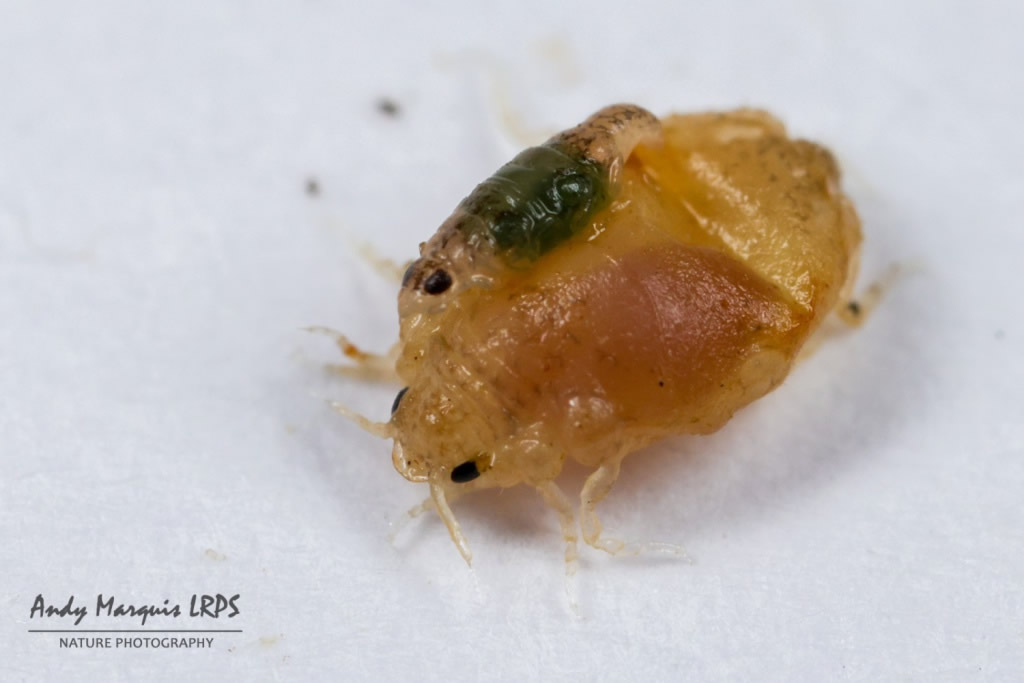Gnathia maxillaris Montagu, 1804
Status:
Native
ID Difficulty
Identification
Gnathia are small (2-7 mm) marine isopods most typically found living benthically offshore. Unlike other isopods, they only have five pairs of legs. They also exhibit marked sexual dimorphism, with males having large heads and mandibles and females being inflated, with fused pereon somites 3-5 and reduced mouthparts. The young (praniza larvae) have a similar shape to the females and live as external parasites on fish in estuaries. Identification is based on characteristics of the adult male cephalon and mandibles.
In G. maxillaris (males 4.5-5.0 mm), the cephalon, which is wider than long, is slightly concave at the front, with square corners, and the lateral tooth on the mandible is closely appressed.
Distribution and Habitat
G. maxillaris is the commonest Gnathia intertidally, being found in crevices, barnacles and Laminaria holdfasts. It has been recorded from southern and western British and Irish Sea shores.
References
Naylor, E. & A. Brandt. 2015. Intertidal Marine Isopods. Synopses of the British Fauna (New Series), No. 3. Field Studies Council, for The Linnean Society of London.
Links
World Register of Marine Species (WoRMS): https://www.marinespecies.org/aphia.php?p=taxdetails&id=118994
Aphotomarine: https://www.aphotomarine.com/isopoda_gnathia_maxillaris.html
Ocean Biodiversity Information System (OBIS) distribution map: https://mapper.obis.org/?taxonid=118994



